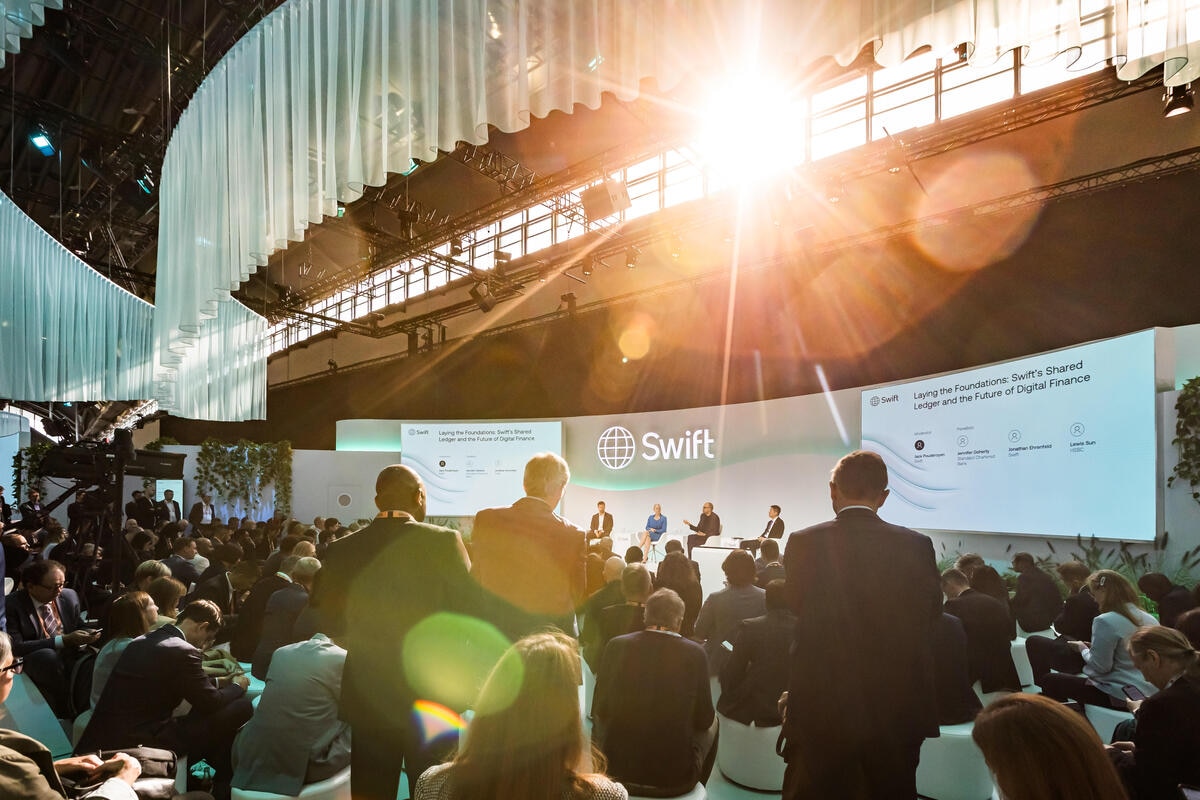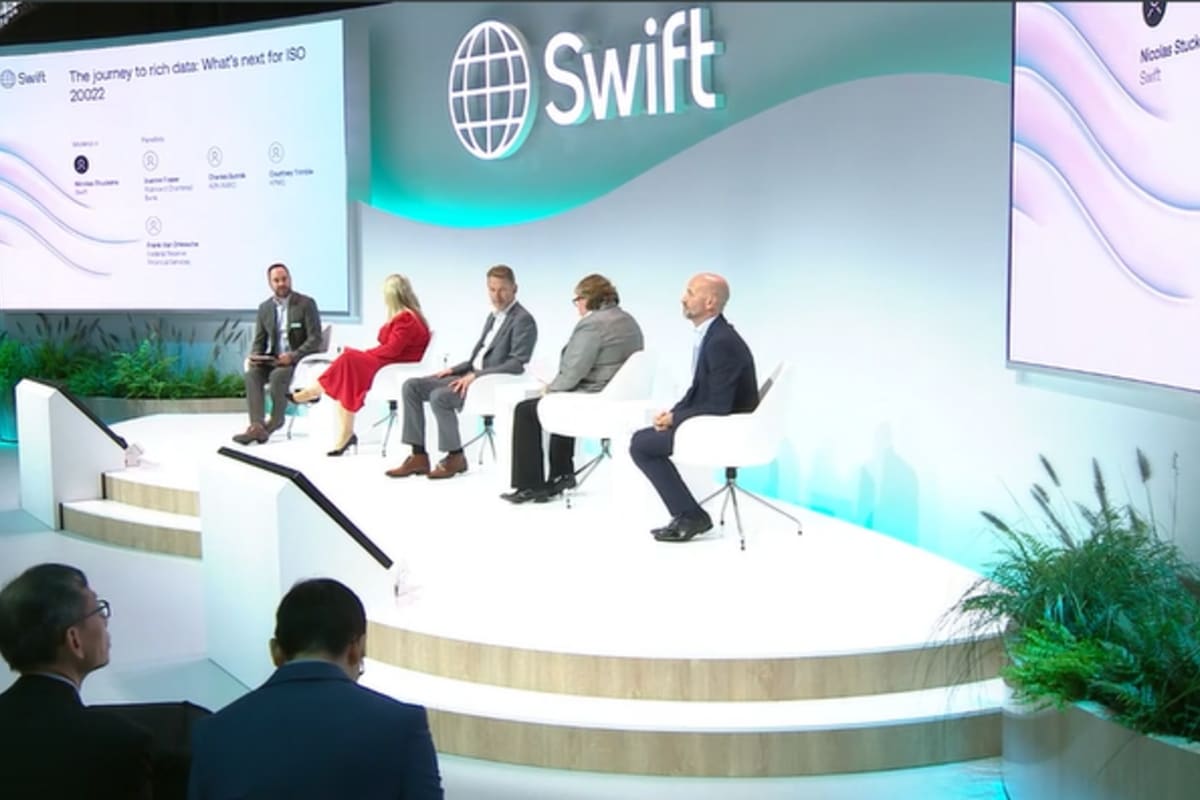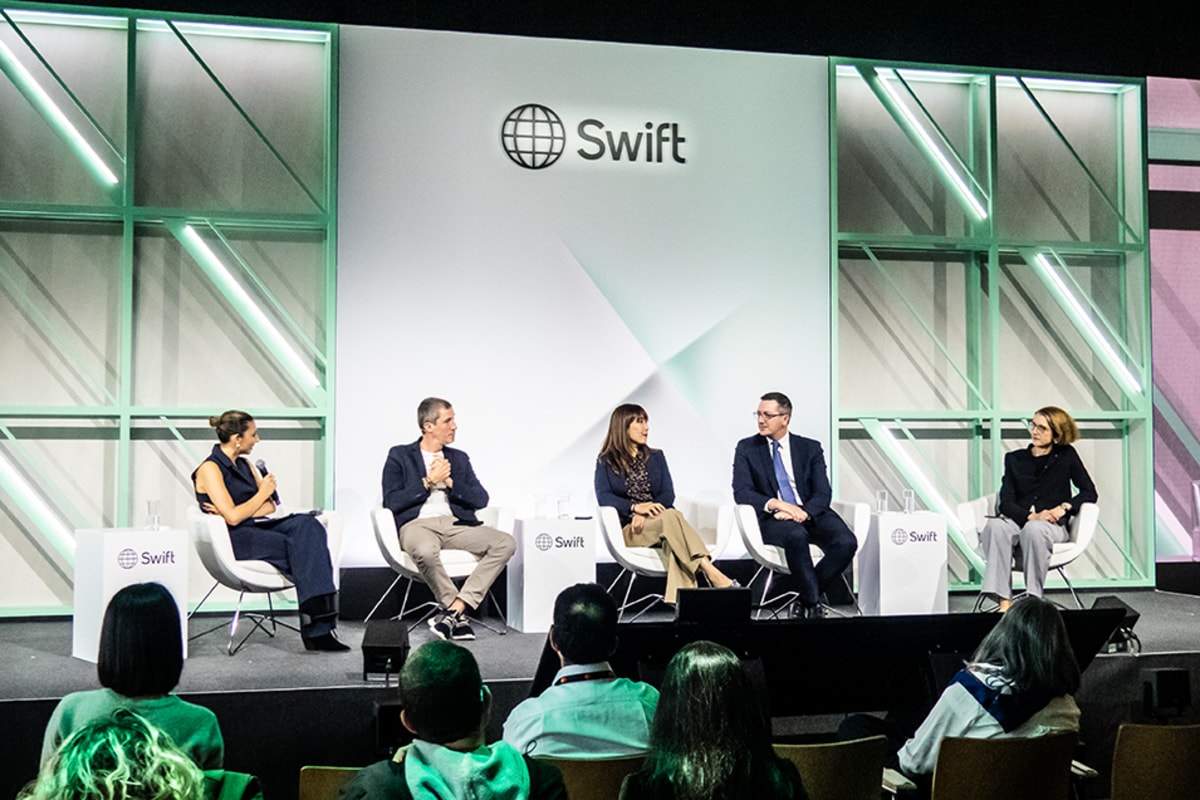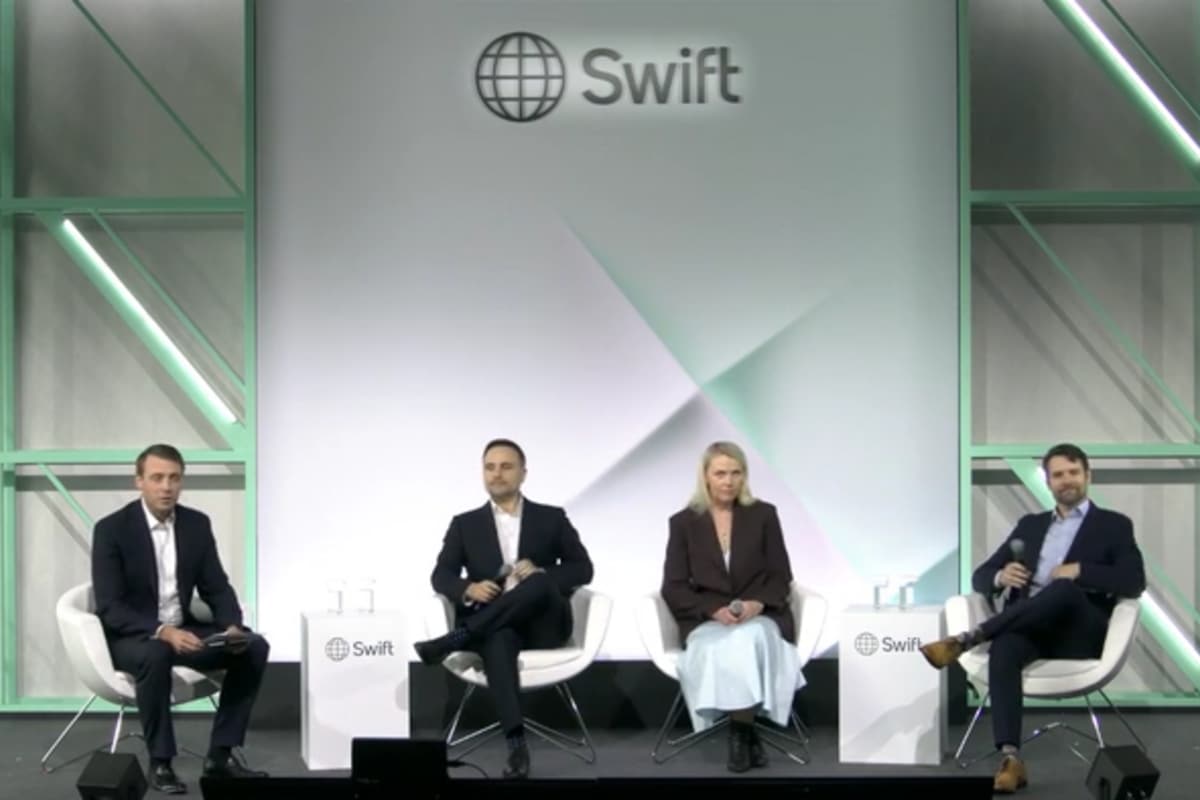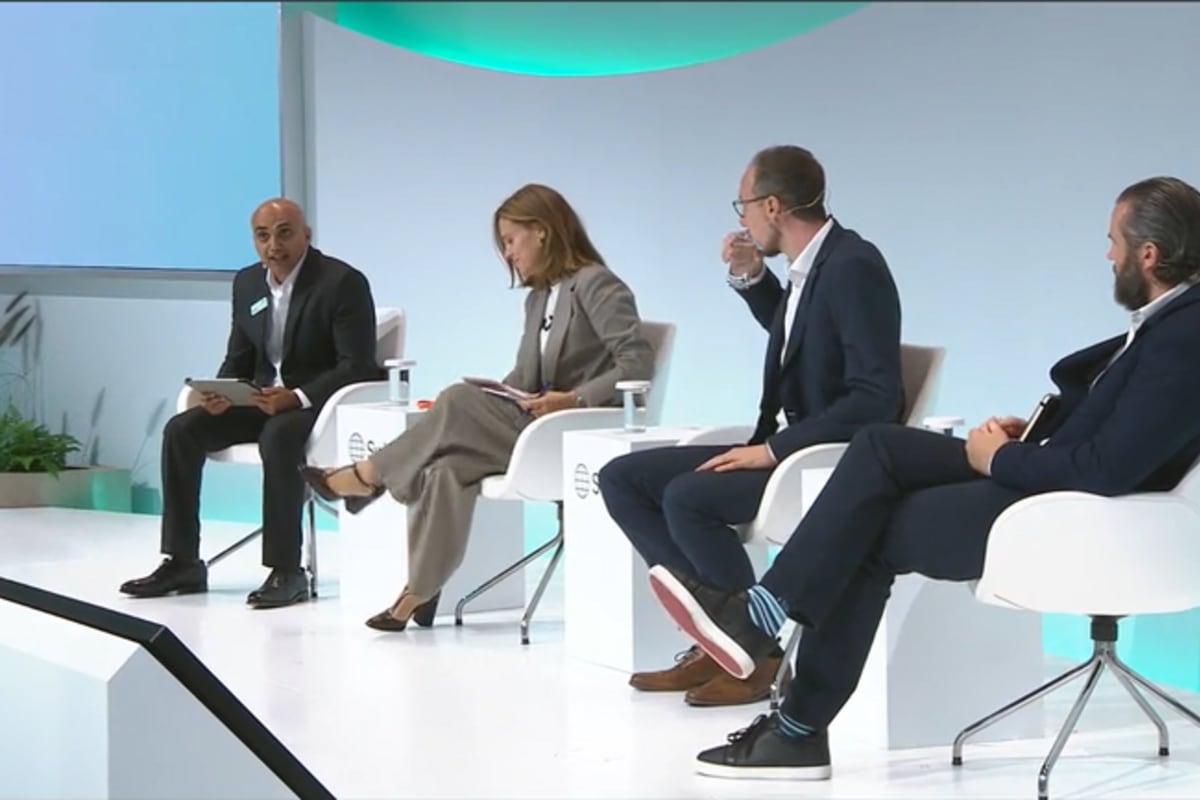From 29 September to 2 October 2025, a record 12,400 participants came to Frankfurt to attend Sibos 2025. With the event now a month behind us, we reflect on what was discussed at this fantastic event.
The theme of this year’s event was ‘The next frontiers of global finance’. More than 500 expert speakers joined us to discuss topics like the interoperability of digital assets, T+1 settlement and the use of AI in combatting payments fraud. And, we also saw the myriad ways that Swift and its community are working together to move the industry forward.
Read on to discover eight key takeaways from this year’s event.
-
Swift’s blockchain-based ledger will accelerate the industry's transition to digital finance
-
The Swift retail payments scheme will help banks meet rising customer expectations
-
Fully investing in ISO 20022 will help realise its full benefits
-
More work is needed to speed up the ‘last mile’ of cross-border payments
-
As the move to T+1 continues, cross-border coordination is becoming more important
-
Corporate treasurers are embracing strategic roles and smarter payment visibility
Experience Swift at Sibos on demand
At Sibos 2025, industry experts explored the forces shaping the next frontiers of global finance. Catch up on all the insights on demand, today.
1. Swift’s blockchain-based ledger will accelerate the industry's transition to digital finance
During the event, Javier Pérez-Tasso announced our plans to add a blockchain-based shared ledger to our technology infrastructure. This initiative will extend our platform into a digital environment, enabling the trusted movement of tokenised value across digital ecosystems.
“You may think, ‘Wow, aren’t those opposites? Swift and blockchain. TradFi and DeFi. Can they really go together?’” he said. “In the regulated system of the future, we believe they can. Banks are ready for it. And they’re asking us to play a bigger role.”
We’ve already started designing and developing the ledger with a group of more than 30 financial institutions, with the first use case focusing on real-time, 24/7 cross-border payments. Built for interoperability with existing and emerging networks, the ledger will maintain the trust, resilience and compliance that’s critical to the secure functioning of global finance.
Watch: Laying the foundations: Setting out the vision for Swift’s new ledger
2. The Swift retail payments scheme will help banks meet rising customer expectations
Cross-border payments have come a long way, with 75% of payments now reaching the beneficiary bank within ten minutes. But for retail customers, upfront predictability on cost and speed remain the last barrier.
That’s now set to change. Collaborating with over 30 banks, we’re launching a new scheme that will guarantee a consistently fast, predictable and transparent experience for retail customers. Participating institutions will commit to upfront transparency on payment and FX fees, full-value delivery, end-to-end visibility over transactions, and instant settlement where available.
“The intent of this framework is essentially to write a set of rules that will ensure that the end customer gets exactly the experience they need – full transparency over payment fees and knowing when the payment is going to arrive at the destination,” said Thierry Chilosi, Chief Business Officer at Swift.
Watch: Rewriting the rules: How Swift’s new scheme will transform retail cross-border payments
3. Fully investing in ISO 20022 will help realise its full benefits
The coexistence period for ISO 20022 and MT is set to end on 22 November. But the transition to ISO 20022 isn’t just about adopting a new messaging standard. It’s about unlocking richer and structured data that can transform payments, drive efficiency, enable compliance and open the door to innovation.
Industry-wide, the benefits of ISO 20022 are already being felt. Banks are reporting higher straight-through processing rates and faster processing times – and there are clear opportunities to use richer data to create new value-added services. Progressing further will require coordinated global effort and strict adherence to new standards.
“Quite a few participants still rely on the last resort contingency measure, which is conversion,” said Charles Bunnik, Market Infrastructures Manager, ABN AMRO. “We need to do more as an industry to really reap the benefits from ISO 20022. Otherwise, we invest a lot, and we will never realise the benefits. This is for me a major concern, and that’s why I’m asking you to step up your game and really adopt ISO.”
Watch: The journey to rich data: What’s next for ISO 20022
4. Data sharing is a powerful tool in fighting fraud
Financial crime is a global challenge, and a huge cost to the cross-border payments industry. It’s also an area that is evolving rapidly, with fraudsters increasingly using social engineering techniques to manipulate people into making payments.
The financial industry is investing heavily in AI to help fight financial crime – but since AI is really powered by the data behind it, a collaborative effort is needed to pull data together and train global models in order to fight fraud effectively. As well as regulatory developments in the information sharing space, this is being enabled by the growing focus on privacy enhancing technologies, such as federated learning.
“I like to compare this to the development of medicines,” said Kirsten-Anne Bremke, Managing Director, Data and AI Tribe Lead at Deutsche Bank. “I think what we need to get across to institutions is really the development of a digital immune system. One piece of this is the development itself – and the other one is the mindset of really wanting to have that.”
Watch: Unlocking the power of AI & data collaboration for fraud
5. More work is needed to speed up the ‘last mile’ of cross-border payments
The G20 target requires 75% of cross-border payments to be credited within one hour by the end of 2027. And the industry has already made considerable progress towards this goal: according to recent research by Swift, 75% of payments reach beneficiary banks within 10 minutes.
However, the ‘last mile’ – the final stage of a payment’s journey – accounts for 80% of total payment delays. In some cases, it can take more than a day for the beneficiary to be credited.
Where retail payments are concerned, Danielle Johnson, Head of International Payments and Market Management at Westpac, explained that the bank uses correspondent banking partners to connect to real-time payment schemes. “But there are still things organisationally that we need to conquer in order to get that true 24/7 experience.”
These include looking at existing cut-off times and extending processing times with legacy platforms. “The main thing is that technology is probably not the hardest part of it – it’s breaking down the legacy of how you’ve created your international payments.”
Watch: G20 Goals: Case studies on market practices and regulatory requirements impacting speed
6. Collaboration is key to digital assets interoperability
Recent advances in technology mean that end customers are increasingly accessing digital forms of value alongside traditional ones – making the need for interoperability more pressing.
Kelvin Li, General Manager of Platform Tech at Ant International, recalled the firm’s experience of working with more than 10 banks on tokenised bank deposits. “The real interoperability issue that we encountered is related to risk management,” he said. “If you move your payment infrastructure onto your blockchain, how would this payment be AML’d?”
As Michela Rabbia, Head of Financial Institutions Product at Intesa Sanpaolo observed, “No single player can succeed alone. If we want to do something together in this world, we need to partner together, and also with market infrastructures, national central banks and technology providers.”
Watch: Interoperability in digital assets: Let’s make it happen!
7. As the move to T+1 continues, cross-border coordination is becoming more important
A successful move to T+1 in North America has prompted other markets to assess their readiness and strategies. The EU, for example, is set to move from T+2 to T+1 settlement by 11 October 2027.
But the shift to shorter settlement cycles is not just about speed – it’s also about adaptability, transparency and automation. As this shift continues, there will be a greater need for cross-border coordination and technology upgrades.
“I think a lot of the discussion around T+1 is about the immediate readiness and what we need to do to prepare ourselves for this transition in a couple of years’ time,” said Sachin Mohindra, Executive Director at Goldman Sachs.
“What we really need to do as an industry is think about how we can do things differently to how we do them today. And what I mean by that is a traditional way of us matching transactions and persisting it down a stack and going through multiple hoops to get to the end state. How can we streamline that process a lot more?”
Watch: Reduced settlement cycles & improved global efficiencies: A reality?
8. Corporate treasurers are embracing strategic roles and smarter payment visibility
Corporate treasurers are moving beyond liquidity management to take on more strategic responsibilities. As a result, gaining greater visibility, efficiency, and certainty in transactions has become a top priority.
As Fabian Trostorf, Cash Manager/Payment Expert at Bayer AG, observed, “There are definitely some gaps right now when we are talking about payments and visibility.” He explained that while banks offer individual solutions that provide insights about the status of payments, the company did not consider connecting with multiple banks via single technical solutions to be a ‘reasonable effort’.
By using the Swift GPI Tracker, Bayer is able to receive tracking information from dozens of banks through one channel, enabling the company to not only monitor its payments but also gain insights and identify inefficiencies.
Where ISO 20022 is concerned, Iria Fernandez Seijas, Global Head of Cash Management at Santander Corporate & Investment Banking, added that more structured data allows the bank to provide more robust information. “Combining this standardisation with Swift GPI in a collaborative space is really making the difference in efficiency, but also in compliance and security.”
Watch: Empowering banks in elevating the corporate payment experience



